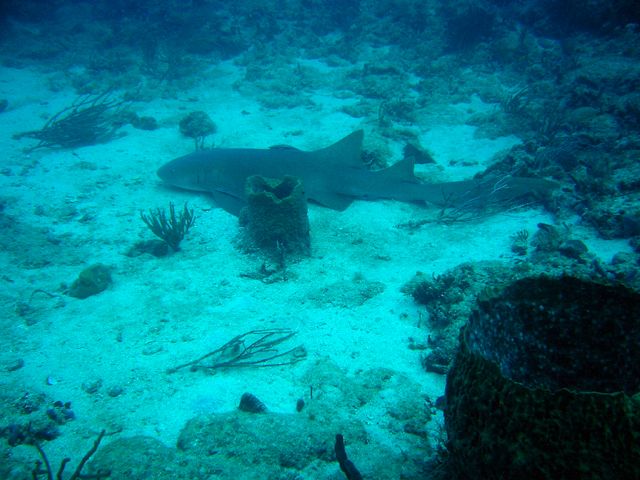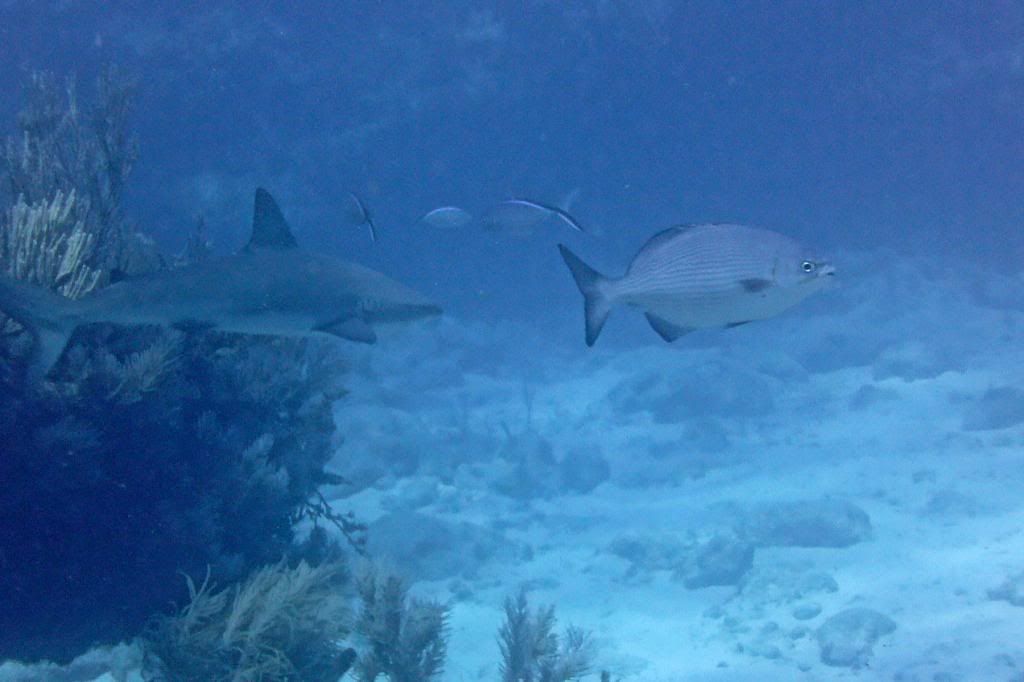In defense of sharks...
Anybody that knows me knows my mantra, “The greatest risk is
not taking one,” and as T.S. Eliot once said, “Only those who will risk going
too far will find out how far they can go.”
Some people are perfectly complacent standing still. Not me.
I have fallen 10,000 feet out of a pressurized metal tube, I have swam with flamingos in burnt red water, I have been 13,000 miles
from home, I have hung from a parachute towed by a Kia-sized boat, and I have
climbed stone staircases over a millennium old.
I can spew countless reasons not to partake in any of that
(who wants to rely on manually deployed nylon to slow one’s terminal
velocity by over 75% in order to stay alive, share a swimming hole with brine
shrimp, be strapped to a harness 600 feet above the Atlantic, or slip and
tumble down 117 feet of Mayan stairs?). Not
only do the reasons against those activities outnumber those for, the ONLY
reason I can think of for them is simply because… they’re awesomely exhilarating.
As a society, Americans overrate risk. Not to diminish the threat of dying in a car
accident (14,813 in the U.S. in 2000), but one’s risk of death by… falling… is
almost as great (13,322 in the U.S. in 2000).
Yet, the vast majority of people, if asked, will cite sharks as greater
fears than cars or ladders. This
irrational fear has been engrained in the recent American mind, mostly due to
Hollywood or TV. The plethora of documentaries
about nature’s powerful and mysterious machines, including Discovery’s annual
shark week marathon, keep Americans glued to their couches and fuels their
fears. I will not discount the footage
they display. And as disturbing as it
can be, it is also quite amazing. But
the awareness and truth about sharks is a mixed bag of love and hate.
In 2010, there
were 79 confirmed shark attacks on humans worldwide. 6 died. The average falls to 4.3 if you consider the
numbers from the previous nine years. During
the entire first decade of the 21st century, 34 scuba divers were attacked and 7 died. Humans do not satisfy the shark palate, and in
the rare times they bite, they tend to move on to something less healthy. And if I were to gamble, I bet the vast majority of them were asking for it.
On my first two
dives in Key Largo, 37 and 34 minutes respectively, I had two encounters with
some timid and skittish underwater locals.
At approximately five feet in length, the first was a typical inhabitant
of shallow, tropical, nearshore waters – the reef shark. Research reveals its typical diet of small
fish, such as mullets, groupers, and jacks, which were all plentiful. Under most circumstances, he is easily
frightened by submerged swimmers. We
were included in that category. The
second native was the lethargic bottom-dwelling nurse shark. Approximately 30-32 feet down, camouflaged in
the black spotted sand, he measured about 7 feet in length. Slow-moving and largely nocturnal, the strong
jaws of these creatures are only of concern to shellfish, coral, and things
with gills.
 |
| Nurse Shark at Molasses Reef, Key Largo, FL |
These citizens of
Molasses Reef were well-mannered and, at least from our distance, carried
pleasant dispositions. It was a bar that
will be hard to measure up to on my next few dives, but an experience of a
lifetime. Swimming in a sea of chummed
blood may be pushing the excitement a bit too far, but it is certainly possible
to share a reef with sharks and surface with all limbs intact.
Go see the world
underwater. Go swim with sharks. And save the spearfishing for freshwater.
Slideshow:


No comments:
Post a Comment